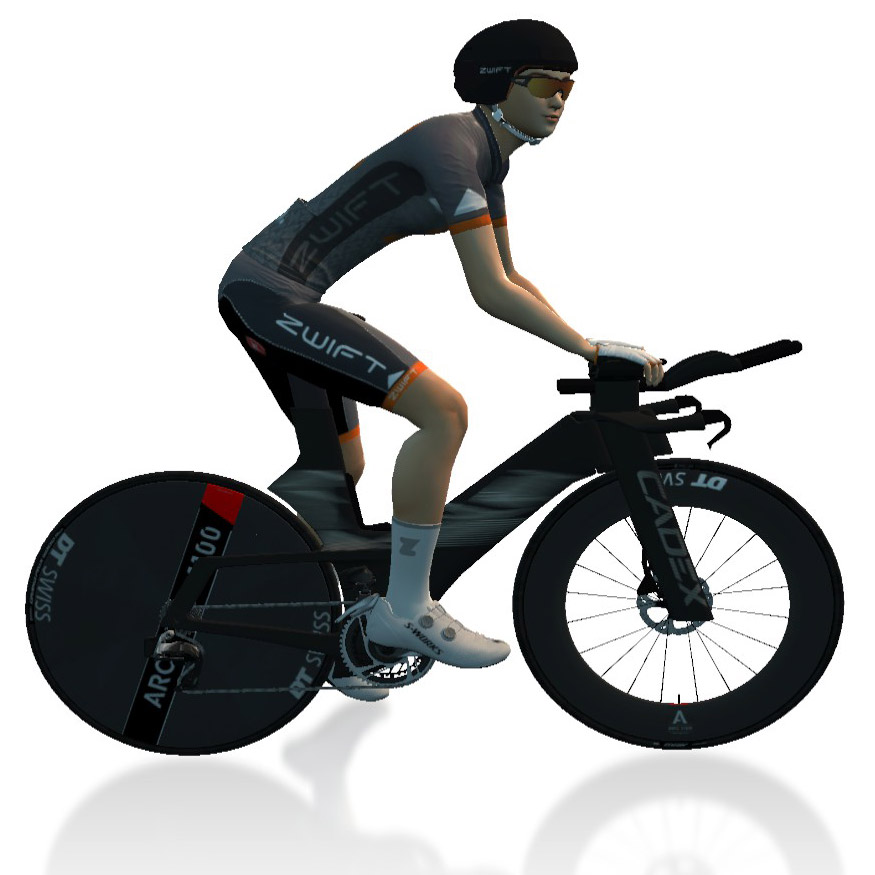The first race of Zwift Racing League 2025/26 Round 2 happens Tuesday, November 4, and it’s a team time trial on Greatest London Flat. This is a favorite TTT course that has featured in multiple ZRL rounds due to its flat/rolling nature with just enough pitch change to keep us on our toes.
Let’s dig into crucial segments, bike choice tips, and more!
Looking at the Route: Greatest London Flat
Greatest London Flat has been used multiple times as a ZRL TTT course. It takes you around the City of London itself, then over to Surrey with the flattest of the three paths through before taking you back to London to finish on The Mall.
Total ride length is 31km for all categories – that’s a 7.4km lead-in to The Mall followed by a 23.6km lap. Here are some classic notes from Sherpa Dave:

While the profile above may look rather lumpy, this is a fairly flat course, with just a few important bits (climbs) worth mentioning:
- Northumberland Ave @3.6km (150 meters at 4%): your first ramp of the race, and you’re still in the lead-in portion! Give it the beans, but don’t drop anyone. Recovery is just around the corner…
- Surrey Parkland Ramps @18.3km (3km long): the toughest part of the course, this series of long rollers forces you to keep the power high if you want to maintain race-winning speed!
- Ramp up from the Underground @22.5km: teams can lose several valuable seconds by attacking this one incorrectly! You want to ramp up your power heading into this steep, short ramp so you carry more momentum, then keep hammering hard over the top to get back up to speed.
- Northumberland Ave again @27.2km (150 meters at 4%): with just a few kilometers left, you may have lost a rider or two at this point. Make sure you stay together so you can pull hard to the line.
Also worth noting: in between the key climby bits above you’ll find a light of slight inclines and declines. Riding these smartly can make a big difference in your overall time! That means going harder on inclines, and easing a bit for recovery on the declines. Raising your trainer difficulty to 100% may help your team feel the slight gradient changes more uniformly so you all react appropriately.
Read more about the Greatest London Flat route >
Bike Frame + Wheel Choice
Bike choice here is simple: go aero. On a flat route like this, weight doesn’t matter much, and aero is everything! The best setup by far is the CADEX Tri frame paired with the DT Swiss Disc wheels, but you’ll need to be at level 40+ to access this sweet rig:

If you don’t have access to this setup, check out “Fastest TT Bike Frames and Wheels at Each Zwift Level” and use the fastest TT frame and wheelset available at your level.
One more note on bike choice: upgrading your frame makes a big difference. A fully upgraded frame saves around 13 watts, or ~48 seconds per hour of riding. Read all about the performance improvements you receive from upgrades here.
More Route Recons
Many recon rides are planned each week on the upcoming ZRL route. If you’re unfamiliar with this course, jump into an event and familiarize yourself with the route! Find a list of upcoming ZRL recon rides at zwift.com/events/tag/zrlrecon.
Additionally, riders in the Zwift community do a great job every week creating recon videos that preview the courses and offer tips to help you perform your best on the day. Here are the recons I’ve found (comment if you find another!):
J Dirom
Nathan Krake
John Rice
TTTips
Successful team time trialing on Zwift requires a challenging combination of physical strength, proper pacing, and Zwift minutiae like picking a fast bike, understanding drafting in a TTT context, and getting your frame fully upgraded.
Flatter courses like this week give valuable seconds to teams with big pure-power riders who can keep their power high on the front while staying in single-file formation to conserve in the draft behind. Extra seconds can also be gained by pacing smartly, ramping up the effort on short climbs and recovering a bit once you’re up to speed on the short descents.
On a course like this week’s, I highly recommend all team members set their Trainer Difficulty to the same value so you’re all feeling the gradient changes similarly. (When one rider has it set to 100% and another 25%, the first rider may ramp up power much more than the second when a climb hits, which can make a mess of your team formation.)
Your goal in a ZRL TTT is to get four riders across the line in the shortest time possible. That means every team’s pace plan will differ based on each rider’s abilities. I highly recommend having an experienced DS on Discord directing your team, especially if your team contains some inexperienced TTT riders.
Lastly, if you want to go further down the TTT rabbit hole, I highly recommend Dave Edmond’s Zwift TTT Calculator tool.
Questions or Comments?
Share below!